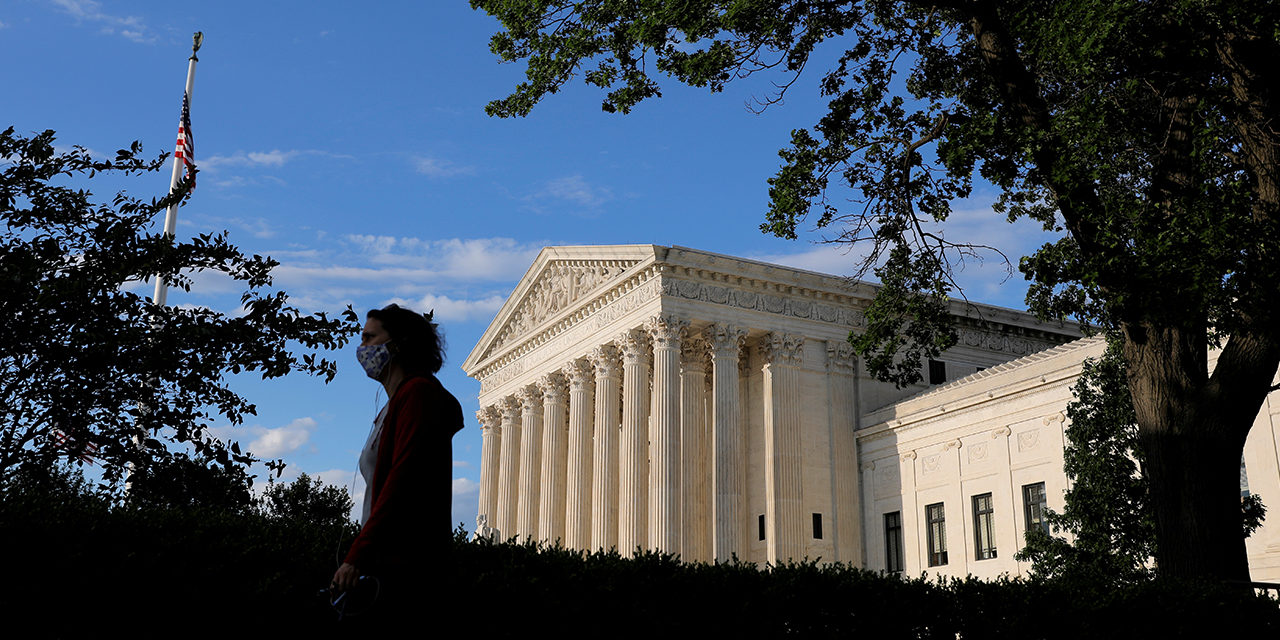The U.S. Supreme Court on Monday accepted an appeal from Mississippi in a case that struck down a 2018 law banning abortions there after 15 weeks’ gestation. The law pushes the boundaries of what is typically considered “viability” of a preborn baby, which is, legally speaking, the point at which a state can regulate abortion in a meaningful way. The case sets up the possibility of a major revision to, or a complete overruling of, the Court’s previous abortion precedents.
Is this a turning point in the longstanding cultural and legal conflict over abortion in this country, or will pro-life advocates be disappointed once again?
We’ve had our expectations dashed only recently. In 2020, the Supreme Court had the opportunity to make inroads into supporting a state’s right to protect women from abortion malpractice in a case from Louisiana. But in a disappointing 5-4 decision in June Medical Services v. Russo, the high court struck down a law requiring abortionists to have admitting privileges at local hospitals, with Chief Justice John Roberts joining with the four liberal justices in the majority opinion.
Since June Medical, however, the composition of the Supreme Court has changed with the death of Justice Ruth Bader Ginsburg and the appointment of Justice Amy Coney Barrett. Barrett is considered to be on the polar opposite of the spectrum from Ginsburg when it comes to the constitutional underpinnings of abortion, but this case will be the first opportunity for the world to witness whether, and to what extent, that is true.
Abortion law in this country has been controlled by the concept of “viability” of the preborn baby, set by the Supreme Court’s rulings in Roe v. Wade in 1973 and Planned Parenthood v. Casey in 1992. But the generally accepted medical definition of viability has changed over the years as scientific advances allow for earlier and earlier successes in achieving viability outside the womb. In 1973, at the time Roe was decided, viability was thought to be around 28 weeks, but by the time of Casey it was considered to be around 23 to 24 weeks.
And medical science is improving its success rates all the time with premature babies. There is even one story of a baby surviving at 21 weeks, four days’ gestation.
But the viability standard has always been an arbitrary choice. What makes abortion before viability a constitutional “right,” but a state can regulate, and even prohibit, abortion after viability, albeit with some exceptions? Because the Supreme Court said so?
According to Ed Whelan, the former head of the Ethics and Public Policy Center and noted legal expert, many European countries, including France, Germany, Italy, Spain, Norway and Switzerland, prohibit abortion after 14 weeks. In fact, only seven out of 198 countries allow abortion after 20 weeks, including the likes of North Korea, China, Vietnam – and the U.S.
In the Mississippi case, the legal question the justices will consider is this: Whether all pre-viability prohibitions on elective abortions are unconstitutional.
What are the potential outcomes? And when will we see a decision?
The potential outcomes are too numerous to predict with any sort of accuracy, even with the recent appointments to the court that have supposedly shifted the overall judicial philosophy of the court in a conservative direction. Only Justice Clarence Thomas is on record as saying that Roe was wrongly decided, and the three liberal justices have all written or joined in opinions supporting Roe’s constitutionality. That leaves five votes in the hands of justices who have yet to be heard on that ultimate constitutional question.
Could the court conceivably overturn Roe? Yes. Is it likely? It’s impossible to tell at this point. History tells us not to pin our hopes on the court in cases like this.
Perhaps more within the realm of reason is the court rolling back the viability standard to some earlier time, or allowing states the leeway to regulate abortion pre-viability, as in, for example, by prohibiting abortions based on prenatal diagnoses of Down syndrome and other fetal abnormalities.
The country remains deeply divided over abortion, with a recent Pew survey revealing that 59% of Americans want abortion to remain legal in all or most circumstances, while 39% want it to be illegal in all or most circumstances.
What happens if the Supreme Court overturns Roe? A common misconception among the public is that such a ruling would make abortion illegal in the U.S. With a couple notable exceptions, most constitutional experts say the court has no such authority. Overturning Roe would return the issue of abortion back to the legislative realm, with states passing their own policies into law. Some states might prohibit abortion entirely, while others would likely allow abortion at any time for any reason. Other states might come up with laws somewhere in between those extremes.
Congress could even get involved and impose one uniform rule on the entire country. Unfortunately, at the moment that effort appears more likely to codify Roe into federal law than outlaw abortion. That result would perpetuate the same kind of cultural division as what the Supreme Court has done with its abortion decisions.
Since the Supreme Court has accepted the Mississippi case at the end of its current term, it will have to be briefed and argued during its next term, which begins on the first Monday in October. Because of its importance, and the likelihood of major differences on the high court in the opinion-writing that will undoubtedly take place, we probably won’t see a decision from the court until June 2022.
The case is Dobbs v. Jackson Women’s Health Organization.
Photo from ANDREW KELLY/REUTERS






